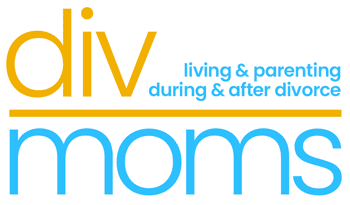Navigating the world of shared custody after a divorce can be as complex as it is common.
In recent years, there’s been a noticeable shift towards more balanced custody arrangements, recognizing the benefits for both parents and children. Here’s a look at this trend, and some tips for managing shared custody.
What you'll find here
ToggleShared custody: A growing trend
Historically, mothers were often granted primary custody, but there’s been a significant shift towards shared custody. The Pew Research Center notes that fathers’ involvement in child care has increased over the years, reflecting a broader cultural change.
This trend is not just about fairness to parents; it’s about the well-being of the children. Studies, like one from the American Psychological Association, have shown that children benefit from maintaining a close relationship with both parents post-divorce.
Benefits of shared custody
Shared custody arrangements can offer several benefits:
- Children’s well-being: Maintaining strong bonds with both parents supports children’s emotional and psychological health.
- Balanced responsibilities: It allows both parents to actively participate in parenting duties, reducing the burden on one parent.
- Personal time: Each parent gets personal time to recharge, which can be scarce in single-parent setups.
Challenges and solutions
While shared custody has its advantages, it comes with its own set of challenges. Here are some common issues and potential solutions:
- Communication hurdles: Use co-parenting apps like OurFamilyWizard or Coparently to streamline communication and avoid misunderstandings.
- Scheduling conflicts: Digital calendars shared between parents can help manage schedules effectively.
- Consistency in parenting: Establishing mutually agreed-upon rules and routines for both households can provide stability for children.

9 ideas for shared custody arrangements
Shared custody arrangements can vary widely, depending on the specific needs and circumstances of the family. Here are some common ways in which shared custody is often divided:
1. Alternating weeks
Parents alternate weeks with the children. This arrangement allows for substantial time with each parent and can be more stable for older children.
2. The 2-2-3 rotation
Under this schedule, children spend two days with one parent, two days with the other, and then a three-day weekend with the first parent. The pattern then reverses. This allows for frequent contact with both parents.
3. The 3-4-4-3 rotation
Similar to the 2-2-3, but children spend three days with one parent, then four days with the other, and the pattern alternates. This can be a good balance between stability and regular contact.
4. Alternating weekends
One parent has the children during the week, and the other parent has them on alternating weekends. This is common when parents want to minimize disruptions to school schedules.
5. Split weeks
Splitting the week, for example, one parent has the children Monday through Wednesday, the other from Thursday to Sunday. This is a frequent contact schedule that still allows for consistent school routines.
6. Customized arrangements
Some families create custom schedules to accommodate parents’ work schedules, children’s activities, and other unique circumstances. This could involve varying day-to-day or week-to-week patterns.
7. Holidays and vacations
Many custody arrangements include specific provisions for holidays, school breaks, and vacations, often alternating these periods between parents each year.
8. Bird’s nest custody
A less common but emerging arrangement where the children stay in one home, and parents rotate in and out according to the custody schedule. This minimizes disruption for the children, but is a lot of work and disruption for parents. At the least, it requires the finances to make this work (one shared home and two separate homes) as well as good cooperation and communication between parents.
9. Long-distance arrangements
In cases where parents live far apart, children may live with one parent during the school year and spend summers and holidays with the other parent.
It’s important to note that the best custody arrangement is one that prioritizes the children’s well-being and accommodates the family’s individual needs. Many parents find it helpful to work with a mediator or family therapist to create a plan that works best for everyone involved.
Legal considerations
The legal landscape of shared custody varies by region. According to the National Conference of State Legislatures, many states are now considering laws to promote shared custody. It’s important to consult with a family law attorney to understand the specific laws and guidelines in your area.
Hear some personal stories
Hearing from other moms who have gone through similar experiences can be incredibly reassuring. Online forums and local support groups can be great resources for sharing stories and advice.
As shared custody becomes more common, single moms need to arm themselves with the right tools, information, and support systems. By focusing on effective communication, legal advice, and emotional well-being, you can turn the challenge of shared custody into an opportunity for growth and positive change for your family.
















